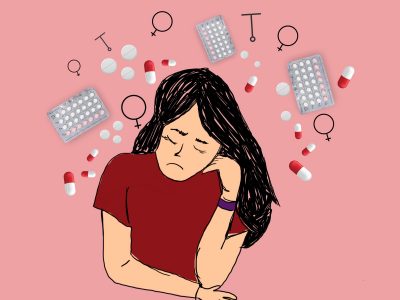Women deserve better from the United States healthcare system. Despite paying more for their care than those in comparably wealthy countries, American women have the highest rate of death from avoidable causes, including the highest maternal mortality rate. They also have one of the highest rates of multiple chronic illnesses.

These problems are exacerbated and partly caused by women’s arduous journey to get an accurate diagnosis and informed care. Women’s symptoms are routinely dismissed by physicians, deemed as exaggerated or in their heads. A 2022 survey indicated that 71% of women said that their physician told them that their symptoms were imagined.
This epidemic of American women’s symptoms being downplayed is known as medical gaslighting — which 72% percent of female respondents in the 2022 survey indicated having experienced.
Damage caused by medical gaslighting is apparent in most aspects of healthcare. There are misdiagnosis rates for many conditions and longer wait times for a diagnosis. Medical gaslighting is especially prominent in the handling of pain.
Women experience pain at a much higher rate than men. A majority of chronic pain sufferers are female. Women are more likely to experience certain diseases that produce chronic pain, including biologically female-specific conditions like endometriosis.
Doctors commonly take women’s pain less seriously, and they are less likely to receive aggressive treatment compared to pain-suffering men. This trend of pain dismissal is made clear in studies focusing on women with chest pain.
Heart disease is the leading cause of death for American women. Females who complain of chest pain spend more time in hospital waiting rooms and are less likely to be admitted. Women are also potentially twice as likely to be diagnosed with a mental illness than males. Chest pain is frequently chalked up to symptoms of stress anxiety, and women who are sent home could be experiencing a seismic cardiac event.
Medical gaslighting in women’s healthcare stems from a lack of representation in research. The majority of human and animal-model research has been done on males. A 2022 women’s health study found that in 86 biomedical clinical trials, only 37% of the participants were women.
Men and women can, and often do, have different presentations for the same illnesses. Sometimes drastically so. Recognizing and treating conditions effectively requires these differences to be researched. It is impossible to provide evidence-based care for women when most evidence is male-centric.
Medical schools must do a better job of teaching about the sex and gender differences that are known. A 2016 survey found that 94% of medical students think sex and gender differences should be covered in their education, but only 59% believe it was sufficiently addressed. Doctors who aren’t educated on these differences cannot provide quality care for their female patients.
The lack of representation in research and insufficient education on biological differences has compounded pre-existing gender biases and sexism. We live in a system where the concerns of American women are routinely disregarded. There is widespread suffering because of it.
The healthcare system cannot continue to let down half of the population it serves.
Progress is being made slowly, but in the meantime, there are things you can do to feel heard. Find a doctor who makes you feel comfortable, ask lots of questions and stand up for yourself. You deserve to be helped.

















































































































